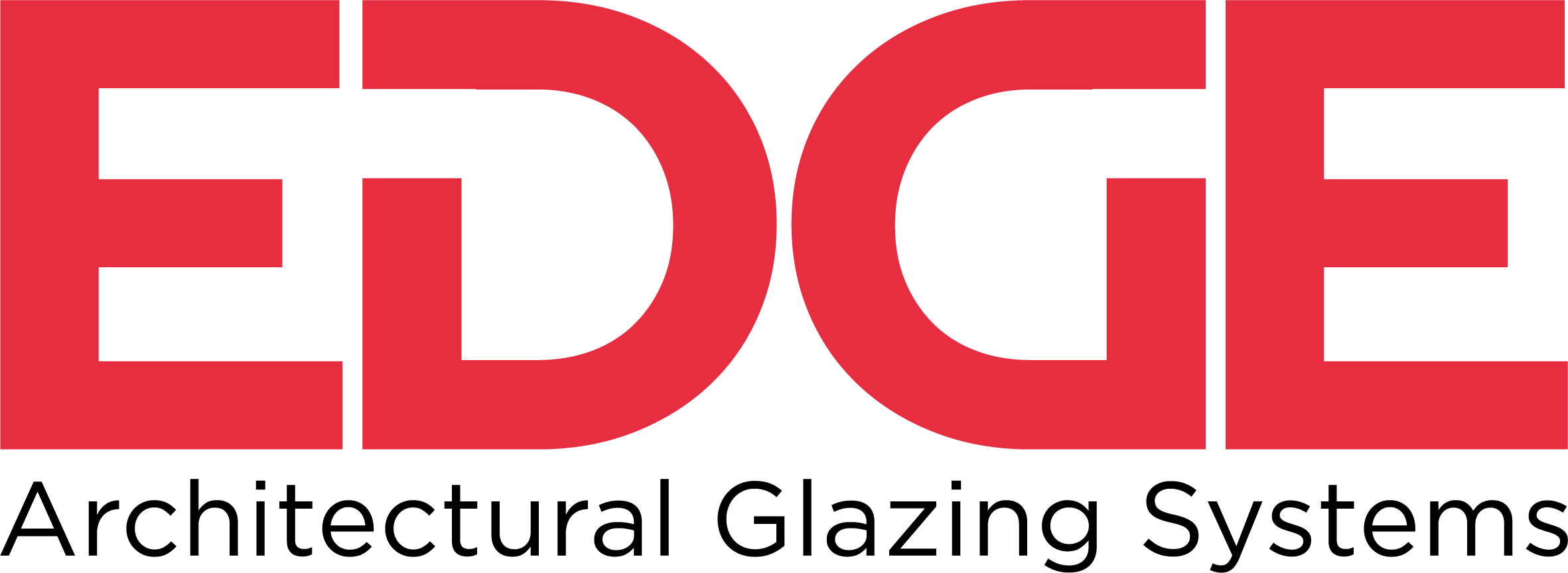Cleaning and maintenance guide for architecturally finished aluminium
4.0 Cleaning procedures and care after installation
Construction soils, including concrete or mortar, etc., should be removed as soon as possible. The exact procedure for cleaning will vary depending on the nature and degree of soil. When selecting a method of cleaning and type of cleaner, consideration should be given to all other materials that may be adversely affected by the wash of the cleaning process. Try to restrict cleaning to mild weather. Cleaning should be done on the shaded side of the building or ideally on a mild, cloudy day.
4.1 Removal of light surface soil on organic and anodic coatings
Removal of light surface soil may be accomplished by alternative methods as described in 4.1.1, 4.1.2, 4.1.3 and 4.1.4. Only trial and error testing employing progressively stronger cleaning procedures can determine which will be most effective. Begin the cleaning process at the top of the building by rinsing an area the width of the stage or scaffolding to the ground level in continuous drop with forceful water spray. This should be done at the beginning and the end of each drop regardless of the final materials employed.
4.1.1 The simplest procedure is to flush the surface with water using moderate pressure to dislodge the soil. If soil is still adhering after drying, then a mild detergent will be necessary.
4.1.2 When mild detergent or mild soap is necessary for removal of soil, it should be used with brushing or sponging. The washing should be done with uniform pressure, cleaning first with a horizontal motion and then a vertical motion. Apply cleaners only to an area that can be conveniently cleaned without changing position. The surface must be thoroughly rinsed with clean water. It may be necessary to sponge the surface while rinsing, particularly if cleaner is permitted to dry on the surface. The rinsed surface is permitted to air dry or is wiped dry with a chamois, squeegee or lint-free cloth.
4.1.3 Run-down of cleaner (from any operation) to the lower portions of the building should be minimized and these areas should be rinsed as soon as and as long as necessary to lessen streaking, etc., from unavoidable run-down, lower areas should be kept wet or flooded with water. Do not allow cleaning chemicals to collect on surfaces or to “puddle” on horizontal surfaces, crevices, etc. These should be flushed with water and dried. Always clean coated surfaces down from top to bottom and follow with a thorough rinsing with clean water. (With one-story or low elevation buildings, it is recommended to clean from bottom up and rinse from top down.)
4.1.4 Mild soap or detergents ruled safe for bare hands should be safe for coated aluminium. Stronger detergents should be carefully spot tested and may necessitate rubber gloves, long handled brushes, etc. With any soap or detergent the finish should be thoroughly rinsed with clean water and dried. Some mild cleaning solutions, comprised of selected wetting agents in water solutions, are available for automatic-building washing machines. These machines would have built-in brush agitation, squeegee, filtration and re-circulation; in some, a fresh water connection may be provided.
4.2 Removal of medium to heavy surface soil on anodic coatings
4.2.1 If surface soil still adheres after using procedures under 4.1, cleaning with the assistance of a cleaning pad can be employed. Hand scrub the metal surface using a palm-sized nylon cleaning pad. Thoroughly wet pad with clean water or a mild detergent cleaner or pumice powder. Start across the top and work down, rubbing the metal surface in the direction of the metal grain with uniform pressure. After scrubbing, the metal surface should be rinsed thoroughly with clean water to remove all residues. It may be necessary to sponge the surface while rinsing, particularly if the cleaner is permitted to dry on the surface. Solvents may be used to remove non-water soluble deposits. Extreme care must be exercised when solvents are used since they may damage organic sealants, gaskets and powder coated finishes. If solvents are used, rinse the surface completely with clean water and allow the surface to air dry or wipe dry with a chamois, squeegee or lint-free cloth.
CAUTION: These procedures must not be used on surfaces with a factory applied clear organic protective coating unless the clear coating has deteriorated and should be removed. Many organic solvents are flammable and/or toxic refer to MSDS for proper handling.
4.2.2 Use of power cleaning tools may be necessary for removal of unusually heavy soils from large areas including panels and column covers. In such cases an air-driven reciprocating machine fitted with abrasive pads can be employed. During this operation, the surface being cleaned must be continually wetted with clean water or mild detergent cleaning solution to provide lubrication and a medium for carrying away the dirt. The cleaning solution may be applied to the panels by sponging or brushing. Water may be applied in the same manner by spraying from a hose or by utilizing the water connection on the cleaning machine. The machine is moved over the metal by the operator with a sufficient number of overlapped passes to effect maximum cleaning. The direction of travel with the cleaning machine is dependent largely upon the geometric configuration of the surface being cleaned. However, when possible, the machine strokes should be made first in one direction and then in a direction perpendicular to the first; (e.g., horizontal passes followed by vertical passes). Areas which are not accessible with the machine must be manually cleaned as in paragraph 4.2.1. After an area has been machined scrubbed, it must be rinsed with clean water and thoroughly scrubbed with a fairly stiff bristle brush. While still wet, a final water rinse without brushing completes this cleaning operation. The rinsed surface should be either permitted to air dry or wiped dry with a squeegee, chamois or lint-free cloth. It is important to promptly remove any cleaner rundown from the uncleaned lower portions of the building to avoid staining.
4.3 Removal of medium to heavy surface soil on organic coatings
4.3.1 A mild solvent such as mineral spirits may be used to remove grease, sealant or caulking compounds. Stronger solvent or solvent containing cleaners may have a deleterious or softening effect on paints. To prevent harm to the finish, these types of solvent or emulsion cleaners should be spot tested and preferably the coating manufacturer should be consulted. Care should be taken to assure that no marring of the surface is taking place in this manner since this could give an undesirable appearance at certain viewing angles. Cleaners of this type are usually applied with a clean cloth and removed with a cloth. Remaining residue should be washed with mild soap and rinsed with water. Use solvent cleaners sparingly.
4.3.1.1 It may be possible for solvents to extract materials from sealants which could stain the powder coated surface or could prove harmful to sealants; therefore, these possible effects must be considered. Test a small area first.
4.3.2 If cleaning of heavy surface soil has been postponed or in the cases of an especially tenacious soil, stubborn stains, etc., a more aggressive cleaner and technique may be required. Cleaner and technique should be matched to the soil and the powder coated finish. Some local manual cleaning may be needed at this point. Always follow the recommendations of the cleaner manufacturer as to proper cleaner and concentration. Test clean a small area first. Cleaners should not be used indiscriminately. Do not use excessive, abrasive rubbing as such may alter surface texture or may impart a “shine” to the surface.
4.3.2.1 Concrete spillage that has dried on the powder coated surface may become quite stubborn to remove. Special cleaners and/or vigorous rubbing with non-abrasive brushes or plastic scrapers may be necessary. Diluted solutions of Muriatic Acid (under 10%) may be effective in removing dried concrete stains; however, a test area should be tried first. Proper handling precautions must be exercised for safety reasons. Also, effective proprietary cleaners for concrete and mortar staining are available.
4.3.3 Never mix cleaners together. The mixing of cleaners may not only be ineffective, but also very dangerous. For example, mixing of chlorine containing materials such as bleaches, with other cleaning compounds containing ammonia, can result in poison gas emission.
4.3.4 Always rinse after removal of any surface soil.
4.4 Inspection
It is suggested that the building owner provide an engineer or representative to inspect the cleaning work to ensure satisfactory clean appearance of the building.
4.4.1 Metal seams, crevices, sills and any other area that may trap water, cleaner or dirt must be cleaned and thoroughly dried. These “trap” areas must be hand-wiped with absorbent towels or cloths to prevent rundown streaks or “puddling” which will later cause discoloration.
4.4.2 Inspect metal surfaces for any discoloration or stains not removed during cleaning operations. Soil or discoloration’s still remaining should be manually cleaned in accordance with sections 4.1, 4.2 and 4.3 until a satisfactory appearance is achieved. Stubborn surface soils should be scrubbed in a uniform direction using a nylon cleaning pad and cleaner solution.
5.0 Cleaning precautions
Here’s a common sense summary of cleaning recommendations for architectural aluminium finishes.
5.1 Correctly identify the aluminium finish to be cleaned when selecting an appropriate cleaning method. Check specifications and/or “as-built” drawings if in doubt as to the finish.
5.2 Never use aggressive alkaline or acid cleaners on aluminium finishes. Do not use cleaners containing trisodium phosphate, phosphoric acid, hydrochloric acid, hydrofluoric acid, fluorides, or similar compounds on anodised aluminium surfaces. Strong solvents or abrasive cleaners can cause damage to powder coated surfaces. Always follow the cleaner manufacturer’s recommendations as to the proper cleaner and concentration. Test-clean a small area first. Different cleaners should not be mixed.
5.3 It is preferable to clean the metal when shaded. Do not attempt to clean hot, sun-heated surfaces since possible chemical reactions on hot metal surfaces will be highly accelerated and non-uniform. Also, avoid cleaning in freezing temperatures or when metal temperatures are sufficiently cold to cause condensation. Surfaces cleaned under these adverse conditions can become so streaked or tainted that they cannot be restored to their original appearance.
5.4 Apply the cleaning solution only to an area that can be conveniently cleaned without changing position. Thoroughly rinse the surface with clean water before applying cleaner. Minimize cleaner rundown over the lower portions of the building and rinse such areas as soon as practical.
5.5 Strong cleaners should not be used on windows and other building accessories where it is possible for the cleaner to come in contact with the aluminium. Solutions of water and mild detergents should be tried first. If an aggressive cleaner is required for some other component of the building, care must be taken to prevent the cleaner from contacting the aluminium finish. Note: Care should be taken to avoid over spray or run off of cleaner onto other buildings components such as glazing materials, weatherstripping sealants, etc.
5.6 Do not use excessive abrasive rubbing to remove stubborn stains. Such procedures can produce an undesirable appearance or adversely affect the finish.
5.7 The type and frequency of cleaning and coating will vary with the amount of atmospheric soil and dirt accumulated on the surfaces and the owners desires regarding appearance. Periodic re-application and wipe-on surface protectants will assist in maintaining the appearance and reduce the cleaning required.


